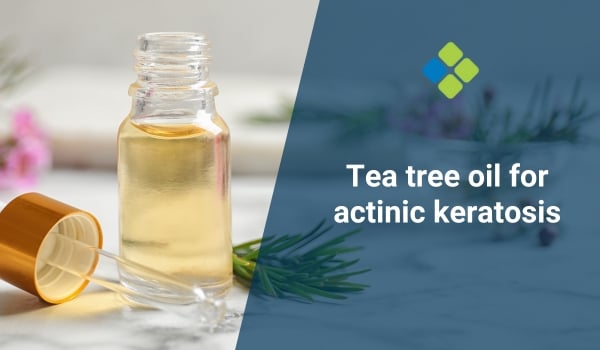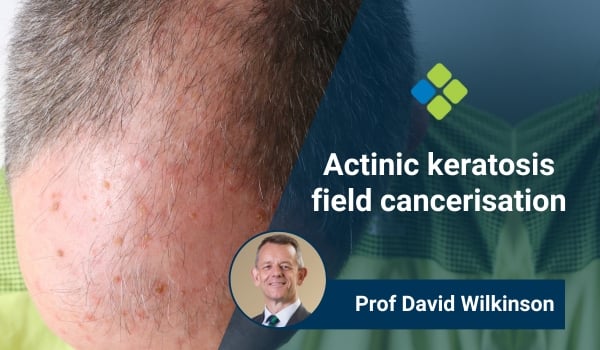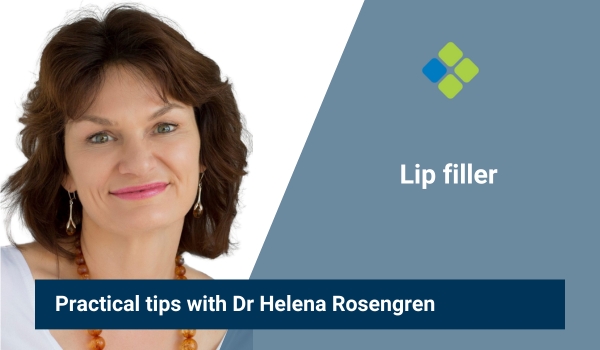Tea tree oil for actinic keratosis
Topical treatments for actinic keratosis, or sunspots, can have adverse side effects, but new research highlights tea tree oil as a new promising solution.

HealthCert Education
Actinic keratosis is a scaly, red, and occasionally itchy patch of skin that sometimes resembles a mole. These lesions usually appear on patients over 50 years of age but can also manifest in younger adults, especially those with prolonged sun exposure. Patients often have many lesions at one time.
Often referred to as sunspots, or solar keratosis, there is a risk that these lesions will develop into squamous cell carcinomas or melanomas, but the exact risk is unknown and it can't be predicted which ones will progress. Therefore, early treatment is the best option.
Current treatments include photodynamic therapy combined with topical preparations. This method requires several weeks of application to be effective and tends to cause a huge inflammatory skin response – leading to reduced compliance as the side effects are often worse for the patients than the original lesion.
In 2010, Australian research highlighted a new, promising topical option. Scientists at the University of Western Australia studied the anti-tumour effects of tea tree oil when applied subcutaneously. Tea tree oil regressed melanoma in mice models.
In 2017, a further Indian review of tea tree oil highlighted the vast array of medicinal properties of tea tree oil, including the anti-cancer activity of the active ingredient: terpinen-4-ol.
Further studies have been undertaken at the University of Kentucky (USA), which validated earlier work and also tested a fully formulated product, utilising terpinen-4-ol, to regress actinic keratosis.
Although the exact mode of action for tea tree oil is unknown, one study showed that it appeared to stimulate an immune response where anti-tumour efficacy is facilitated by a direct effect on subcutaneous AE17 tumour cells in vivo.
While preliminary studies suggest tea tree oil may have potential for the treatment of actinic keratosis, more research is needed to confirm its effectiveness and safety for this use.
A 2019 study published in the Journal of Cosmetic Dermatology investigated the use of tea tree oil in combination with photodynamic therapy (PDT) for the treatment of actinic keratosis. The study found that the combination treatment was effective in reducing the number of lesions and improving skin texture.
Another study published in the Journal of the American Academy of Dermatology in 2020 compared the effectiveness of tea tree oil to that of 5-fluorouracil cream (a standard treatment for actinic keratosis) in a randomised, controlled trial. The study found that both treatments were effective in reducing the number of lesions, but 5-fluorouracil cream was more effective overall.
While these studies suggest that tea tree oil may have potential as a treatment for actinic keratosis, more research is needed to determine the optimal dosage, application method, and long-term safety of this treatment. It is important that patients always consult with a doctor before using tea tree oil or any other natural remedies for the treatment of skin conditions.

 1800 867 1390
1800 867 1390


